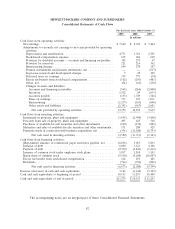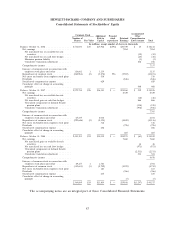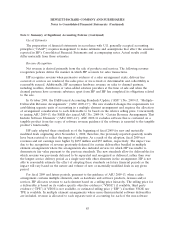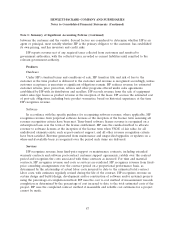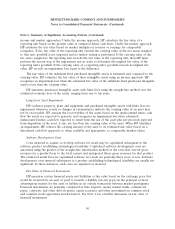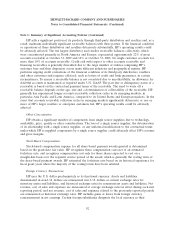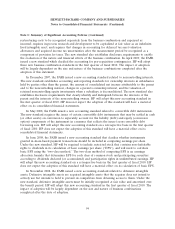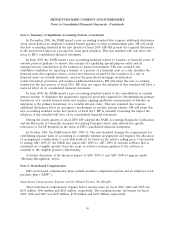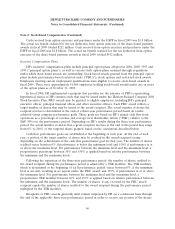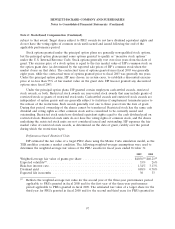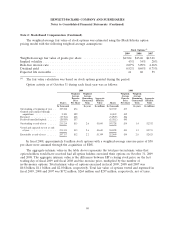HP 2009 Annual Report Download - page 97
Download and view the complete annual report
Please find page 97 of the 2009 HP annual report below. You can navigate through the pages in the report by either clicking on the pages listed below, or by using the keyword search tool below to find specific information within the annual report.HEWLETT-PACKARD COMPANY AND SUBSIDIARIES
Notes to Consolidated Financial Statements (Continued)
Note 1: Summary of Significant Accounting Policies (Continued)
income and market approaches. Under the income approach, HP calculates the fair value of a
reporting unit based on the present value of estimated future cash flows. Under the market approach,
HP estimates the fair value based on market multiples of revenue or earnings for comparable
companies. If the fair value of the reporting unit exceeds the carrying value of the net assets assigned
to that unit, goodwill is not impaired and no further testing is performed. If the carrying value of the
net assets assigned to the reporting unit exceeds the fair value of the reporting unit, then HP must
perform the second step of the impairment test in order to determine the implied fair value of the
reporting unit’s goodwill. If the carrying value of a reporting unit’s goodwill exceeds its implied fair
value, HP records an impairment loss equal to the difference.
The fair value of the indefinite-lived purchased intangible assets is estimated and compared to the
carrying value. HP estimates the fair value of these intangible assets using an income approach. HP
recognizes an impairment loss when the estimated fair value of the indefinite-lived purchased intangible
assets is less than the carrying value.
HP amortizes purchased intangible assets with finite lives using the straight-line method over the
estimated economic lives of the assets, ranging from one to ten years.
Long-Lived Asset Impairment
HP evaluates property, plant and equipment and purchased intangible assets with finite lives for
impairment whenever events or changes in circumstances indicate the carrying value of an asset may
not be recoverable. HP assesses the recoverability of the assets based on the undiscounted future cash
flow the assets are expected to generate and recognizes an impairment loss when estimated
undiscounted future cash flow expected to result from the use of the asset plus net proceeds expected
from disposition of the asset, if any, are less than the carrying value of the asset. When HP identifies
an impairment, HP reduces the carrying amount of the asset to its estimated fair value based on a
discounted cash flow approach or, when available and appropriate, to comparable market values.
Software Development Costs
Costs incurred to acquire or develop software for resale may be capitalized subsequent to the
software product establishing technological feasibility. Capitalized software development costs are
amortized using the greater of the straight-line amortization method or the ratio that current gross
revenues for a product bear to the total current and anticipated future gross revenues for that product.
The estimated useful lives for capitalized software for resale are generally three years or less. Software
development costs incurred subsequent to a product establishing technological feasibility are usually not
significant. In those instances, such costs are expensed as incurred.
Fair Value of Financial Instruments
HP measures certain financial assets and liabilities at fair value based on the exchange price that
would be received for an asset or paid to transfer a liability (an exit price) in the principal or most
advantageous market for the asset or liability in an orderly transaction between market participants.
Financial instruments are primarily comprised of time deposits, money market funds, commercial
paper, corporate and other debt securities, equity securities and other investments in common stock
and common stock equivalents and derivatives. See Note 9 for a further discussion on fair value of
financial instruments.
90




